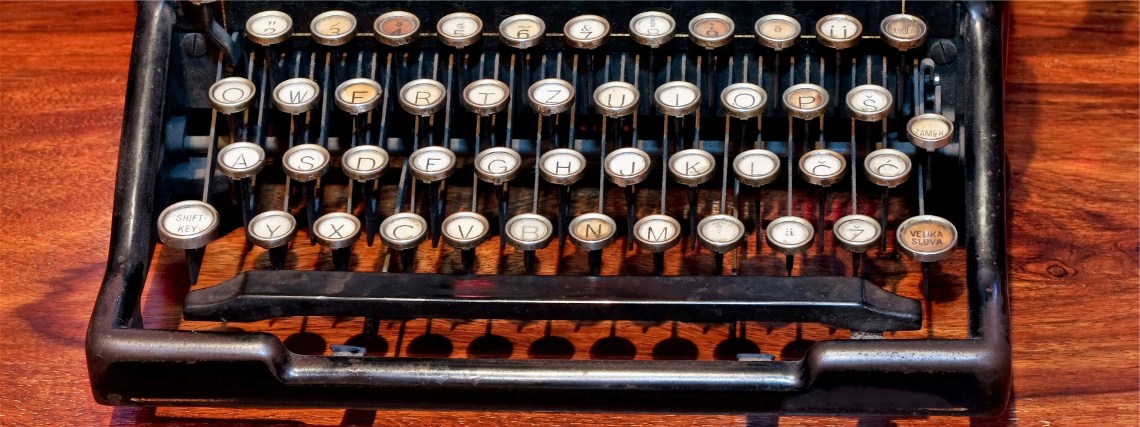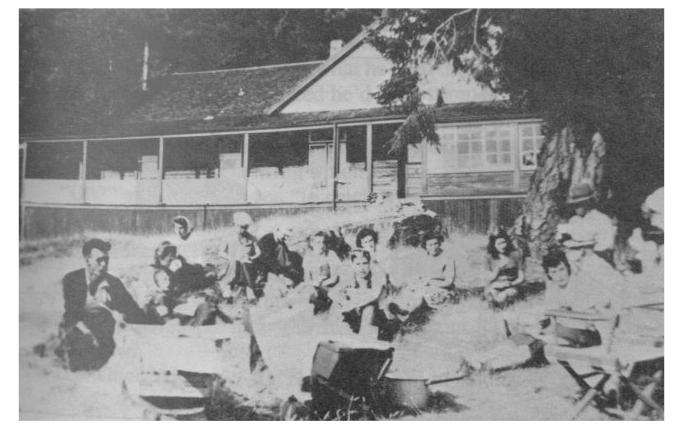 |
|||
|
|
My Writing |
||
Right: Tom Brazil, August 1953 (see picture credits below) Early DevelopmentThe development of Hardy Island started in December 1892 when the crown granted two men, Alexander Grant and Harry Tegg, a lot apiece for the princely sum of $1 an acre. The following year the two men bought the other two lots as well. But neither man was able to hold onto their properties. Tegg managed to keep his smaller lot but the other three lots were forfeited for tax arrears. Those lots were finally sold to John McKinnon in 1906 for $267.17. About five years later, McKinnon built a luxury home near Alexander Point and shortly after that he hired the man who would become a legend in his own time, Tom Brazil. Although never an owner, Brazil would end up living there for 50 years as caretaker of the property for a succession of owners.
Around this time C.T.R. Nixon leased some land from the McKinnons and developed a granite quarry. The Sechelt Granite Company operated for two years from 1915 through 1916. Homes were built for the quarry workers and a year-round population was established. The granite on Hardy Island has natural fault lines making it easy to pick out slabs with little cutting. Even today you can see the fault lines along the granite cliffs. Two large blocks of granite were used to carve the lions that grace the front of the old Vancouver Court House. The island communities of this era thrived as they were regular ports of call for steamships plying the coast. Hardy Island was one such port of call. In the late 1800s, Van Anda on Texada Island was such a vibrant community that it had the only opera house north of San Francisco. With the year-round population there was a demand for a small school. The first teacher, Clarence Frederickson, was only 17. There were twelve pupils in this school, half of them from one family, the Hammonds. They goofed when they built it though. It was set up on large logs resting on boulders on the shore but the builders did not count on the effect of the high tide. One student, Enid Hammond recalled that "suddenly the floor began to slant seaward; there was a tearing sound and screaming of nails being drawn from timbers." Everyone managed to escape before the school collapsed and a sturdier structure was then built. The student population dropped to 8 in the second year and disappeared altogether when the quarry closed.
The Hardy Island School While the quarry was still operating, the island was sold to a British nobleman for $32, 000. The owners not only collected royalties from the quarry, but they also held a mortgage on the business. But by 1930 when a wealthy lawyer and financier from Seattle, Le Roy Macomber, bought the island, the price had dropped to $10, 000. Tom Brazil had been the caretaker for the estate under various owners and continued to work for the Macombers. The Seattle family were frequent summer visitors to the island and hosted many visitors over the years.
Guests at the Macomber Home on Hardy Island The Macombers built a saltwater swimming pool on a rocky outcrop on one of the bays. The walls of that pool are all that remains of the Macomber estate and even those have largely collapsed over the years. Only one wall of the pool remains standing. Macomber died of a heart attack in 1946. A Polish count leased the island for six months in 1948. And finally, in 1951, Marion Macomber, after 21 years as the island's owner and hostess, sold the island to two locals. The Man Who Rowed Standing Up Tom Brazil lived on Hardy Island for almost 50 years and became a living legend during his time. Shortly after becoming the caretaker for the McKinnons, he started to develop a rapport with the abundant deer on the island (over 200). They became quite tame around Tom, much to the delight of the children who lived on or visited Hardy. In fact some of the deer were characters as much as Tom himself. In the 1930s, one young buck named Billy would awaken tourists moored at the dock by pawing at the sides of the boats begging for handouts. Billy, in fact, learned to manipulate the latch on the Macomber's home and often wandered in to mooch from guests.
Tom Brazil and a visitor feed some of his deer. Tom had a way with other animals besides the deer. He raised pheasants from eggs who would come when he called. And one account has it that he even tamed a bear and trained him to do various shores. Although Tom was a casual dresser, he always wore his trademark felt bowler hat, rain or shine, summer or winter. To get provisions for his various employers, he would row to Pender Harbor. The odd thing was, he would row standing up. Pender Harbor, on the Sechelt Peninsula, is a good hour away by motor boat, never mind rowing! The story is told that a passing tug boat once offered Tom a tow. "Tow?" said Tom, "No thanks! I'm in a hurry!" That tale was immortalized in an editorial cartoon in a Courtney newspaper. On one return trip from Pender Harbor, a few drinks under his belt, and with fog rolling in, Tom got lost and ended up on Texada Island. Tom was known as a raconteur, a spinner of tall tales, and a practical joker. He carved electric eels from driftwood and told visitors that they were used to power a light bulb he hung from a tree. Of course, this was a gag. There was no electricity on the island. He had a large glass bull frog that he claimed to use as a decoy. "To catch what?" His visitors would ask. "Bull frogs!" He replied. When asked what he did with the bull frogs he caught this way, he said he sold their "hops" to a brewery. Another story has it that one day Tom needed to skid a log down to the sea. He whistled for his bear but the lazy brute would not come. He went looking for the beast and found him in the woods but the bear refused to cooperate. Tom mounted the bear and spurred the reluctant beast along to the log. He then made the bear nudge the log down to the shore. Upon returning to the house, who should wander yawning from the wood shed but his bear. It seems he had gotten a wild bear to move the log. Or so he would have you believe. Tom was his 80s when his health began to fail. He died in a Vancouver nursing home at the age of 88 in the mid '50s. The Hardy Island community seemed to die with him. Later Development In nearly '70s the island was bought by a logging company. After extensive logging the island was sold to a fish farm in the '80s. At one time the island was ringed by fish farms. But fish farming did not prove viable. The water was too warm. The fish were susceptible to infection. Today only one fish farm remains. The fish farm company sold the island again to a single owner. And that owner eventually sold off two of the four lots, one of them to the consortium of families that includes my friend Paul. Part 3 of this tale will discuss the legal hassles encountered in the subdivision process and the expenses incurred in developing the lots. Sources: There has not been a great deal written about Hardy Island, but the best account is in Karen Southern's book, The Nelson Island Story: including Hardy Island and other islands of Jervis Inlet. Most of the information in this account is taken from the fourteen pages about Hardy Island in Southern's book. The episode about the bear was taken from a book I browsed through on the ferry coming back. More recent developments came from an interview with Paul Miniato. The Nelson Island Story is published by Hancock House, publishers of books on British Columbia geography and history. Photo credits: All of the pictures are from the book, The Nelson Island Story by Karen Southern and are used by permission of the publisher, Hancock House Publishers. You can find out more about Hancock House at their two websites, Hancock House and Hancock Wildlife. Part 3: Battling Bureaucracy for Fun & Profit goes over the bureaucratic nightmare involved in trying to subdivide land in B.C. as well as a detailed accounting of the expenditures the Miniatos faced in building their cabin, getting a boat, etc. Although the land itself was a bargain, building there ain't cheap! Missed Part 1? Click here! |
|
||
|
|
|||
|
Contents copyright ©
Marco den Ouden All Rights reserved |
|||
|
|
|||














 Friday in
Friday in  Left: The Sechelt Granite Company quarry on
Hardy Island
Left: The Sechelt Granite Company quarry on
Hardy Island

